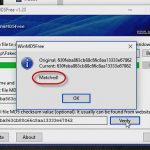Three Tips on Choosing the Hardware for Your BI Solution
Three Tips on Choosing the Hardware for Your BI Solution
Many small- and medium-sized businesses choose to go with Business Intelligence (BI) solutions that are at least partly pre-built. That means that the biggest single factor in the system’s performance – the database schema – is often already decided and can’t readily be changed. The benefit of that approach is that you’re not paying for a custom data warehouse design, which can be incredibly expensive and time-consuming to create. The downside is that you’re getting no input into the most critical aspect of the system’s performance. What you can do, however, is make sure that the hardware your BI system runs on is up to the challenge.
Dedicate, Please
The worst thing you can do is plan to run your BI system on a server that’s already doing something else. Just forget about it. A truly massive, hyper-powerful, fully-loaded server (without storage) might run you $30,000. If that’s too much, then start compromising, using recommendations from your BI system vendor to determine what corners you can cut (hint: slightly slower processors is preferable to fewer processor sockets and cores). Whatever you do, let the entire computer be dedicated to the BI system.
You see, most BI systems already include multiple components: A database engine, an analysis engine, a Web server, and other stuff. Loading your own applications onto the server is just asking too much from it in terms of performance.
Some BI systems – and these are ones to look for – may permit you to spread their various sub-components across multiple servers. If BI system performance is a real concern, then look for a BI system that does permit that kind of spreading-out of components. You’ll get more servers on the job, and that equals better performance.
RAM, RAM, RAM, RAM, RAM
Up to a third of the cost of a new server might be Random Access Memory, or RAM – or just memory to most of us. That’s the third where you don’t want to cut corners. The database engine that powers a BI system needs that memory, and it needs it in a bad way. A 25% reduction in installed memory can easily cut system performance in half, depending on the database engine, BI platform, and other components involved. If you can’t afford to fill your new BI server with memory, at least select a server that will have plenty of room for expansion at a later time. Whatever memory you do buy with the server should be the densest possible: If you’re equipping the machine with 32GB of RAM, do so in as few memory modules as possible to allow for maximum expansion later.
Most BI systems targeted at the SMB market these days rely heavily on in-memory analysis engines instead of, or as a major companion to, a more traditional data warehouse database. In-memory analysis means exactly what it says: Analysis is conducted in real-time, on the fly, in the server’s memory. That means your server will need tons and tons of – you guessed it – memory.
Disks – Fast and Plenty
BI systems that rely on a data warehouse (and nearly all of them do to some extent, mostly to a major extent) need their disk performance to be superb. That means more disks, not bigger ones. It’s the inverse of memory: If you want 1TB of disk space, you don’t want it on a single 1TB drive. Ideally, a dozen 100GB drives would be preferable. That’s because disks have physical constraints on their performance, so by spreading your data across more disks, you get better performance.
Choose disks based on rotational speed and average seek time – faster speeds and smaller times are better. Don’t worry about transfer speeds, which is what disk vendors like to tout; with high rotational speed and fast seek times, you generally get great transfer speeds as part of the package.
Don Jones
PowerShell and SQL Instructor – Interface Technical Training
Phoenix, AZ
You May Also Like
BI, Business Intelligence, Data Warehouse, database schema, Server RAM
A Simple Introduction to Cisco CML2
0 3898 0Mark Jacob, Cisco Instructor, presents an introduction to Cisco Modeling Labs 2.0 or CML2.0, an upgrade to Cisco’s VIRL Personal Edition. Mark demonstrates Terminal Emulator access to console, as well as console access from within the CML2.0 product. Hello, I’m Mark Jacob, a Cisco Instructor and Network Instructor at Interface Technical Training. I’ve been using … Continue reading A Simple Introduction to Cisco CML2
Creating Dynamic DNS in Network Environments
0 643 1This content is from our CompTIA Network + Video Certification Training Course. Start training today! In this video, CompTIA Network + instructor Rick Trader teaches how to create Dynamic DNS zones in Network Environments. Video Transcription: Now that we’ve installed DNS, we’ve created our DNS zones, the next step is now, how do we produce those … Continue reading Creating Dynamic DNS in Network Environments
Cable Testers and How to Use them in Network Environments
0 727 1This content is from our CompTIA Network + Video Certification Training Course. Start training today! In this video, CompTIA Network + instructor Rick Trader demonstrates how to use cable testers in network environments. Let’s look at some tools that we can use to test our different cables in our environment. Cable Testers Properly Wired Connectivity … Continue reading Cable Testers and How to Use them in Network Environments




